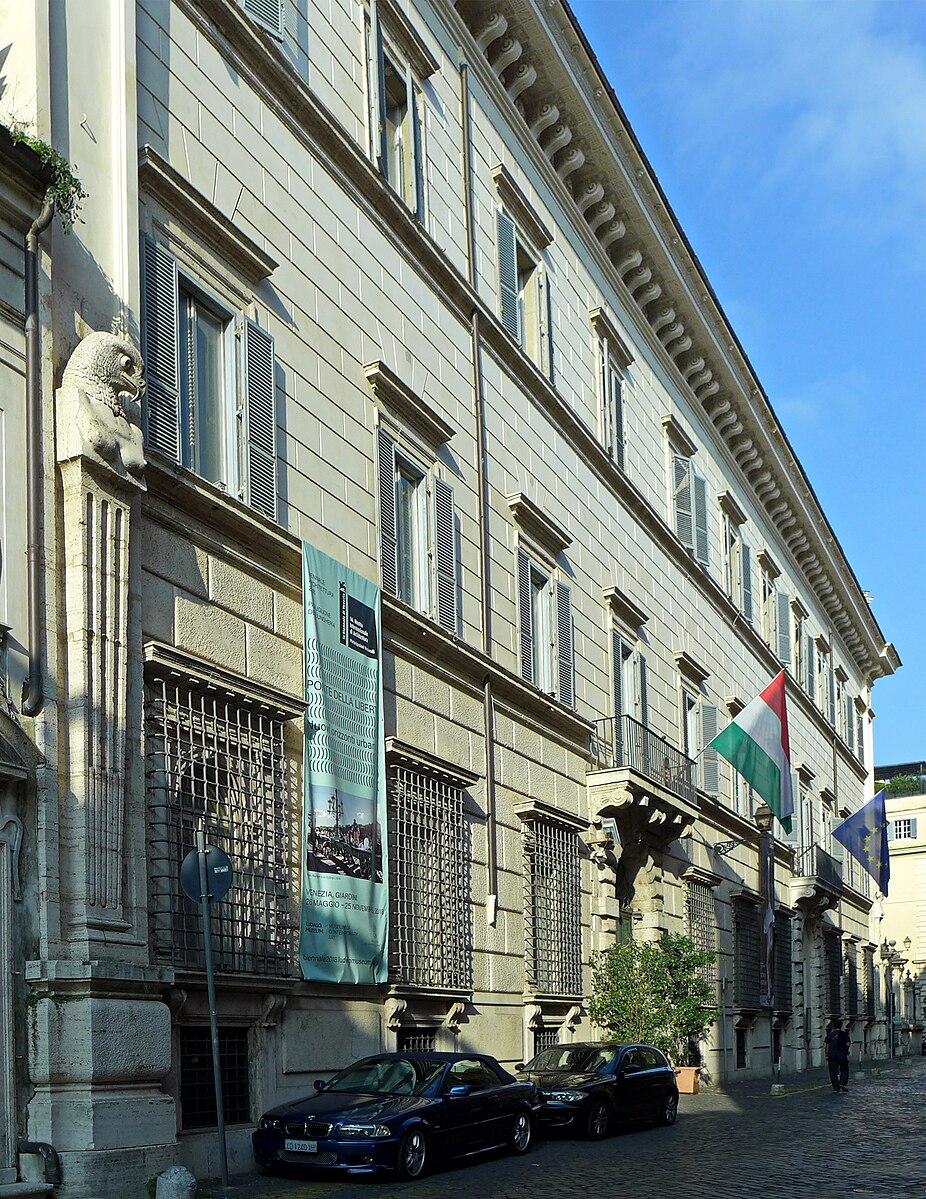This vCard is up for auction, closing in:
Make an offer 
Academy of Hungary, Falconieri Palace

The Academy of Hungary in Rome has been operating in the capital since 1927. Its headquarters, Palazzo Falconieri, is the most valuable property of the Hungarian state abroad, also because many of its wonderful details were made in the seventeenth century by one of the greatest masters of universal Baroque art, by Francesco Borromini. The head of government of the time, István Bethlen and Kuno Klebelsberg minister of education and affairs of worship, bought the palace of particular beauty, because they wanted to donate a worthy home, in the Eternal City, to Hungarian science and culture as well as to the training of the artists, as mentioned also on the commemorative plaque located at the entrance of the building.

The premises date back to the last twenty years of the nineteenth century, when the doors of the Vatican Secret Archive were opened to the public. Vilmos Fraknói, titular bishop, academic of historical sciences, to facilitate the search for Hungarian sources and documents in the Vatican collection of incredible wealth, at his own expense he had a villa built in the Nomentano district, to guarantee adequate accommodation and an auxiliary library for the Hungarian researchers. A few years later he also revealed another villa, where he founded an Academy of Fine Arts for Hungarian artists. Its foundations were later entrusted to the state, and were included in the profile of the Collegium Hungaricum founded in 1927. The objective of the scholarship policy at that time was to bring as many scientists, professors as possible to Italy, Hungarian priests and artists, to obtain European knowledge thanks to contact with Italy, and to ensure that this knowledge could be a testimony to the cultural values ​​of Hungary deprived of two thirds of its territory.

The period up to the Second World War can be considered the institute's first golden age. Dozens of excellent scholars lived in his rooms: Károly Kerényi, Antal Szerb, István Genthon and others, and the results of their research were published in the periodical entitled Annuario. Thanks to the activity of art scholars, a new and independent current in Hungarian painting and sculpture flourished, the so-called "Roman School", which included talents such as István SzÅ‘nyi, Vilmos Aba Novák and Pál Pátzay.
Map: Academy of Hungary, Falconieri Palace
Address: Via Giulia, 1, 00186
Roma (RM) Lazio
Latitude: 41.8947403
Longitude: 12.4695383
Site: ...
vCard created by: Culturalword Abco
Currently owned by: Culturalword Abco
Type: Palace
Function: Headquarters of the institution
Creation date: 03-02-2020 03:19
Last update: 23/02/2024